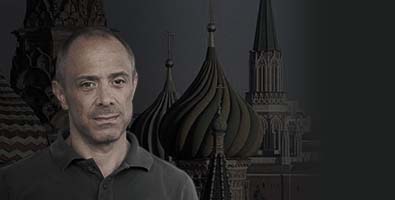Sergei Ivanov and Viktor Ivanov have a lot in common.
In addition to sharing a last name, both are KGB veterans, both are longtime cronies of Vladimir Putin -- and both were thrown under the bus by the Kremlin leader this year.
Viktor Ivanov got the boot in May when Putin liquidated the Federal Antinarcotics Service he ran, merging it into the Interior Ministry, leaving his once-influential pal out of a job and on the outside looking in.
And in August, it was Sergei Ivanov's turn.
With the stroke of a pen, Putin put his longtime cohort out to pasture, firing him as Kremlin chief of staff, one of the most powerful posts in Russia, and exiling him to the meaningless job of special assistant to the president for ecology and transportation.
It was a spectacular fall for a man who had served as Security Council secretary, defense minister, and deputy prime minister; and who was widely seen as a potential successor to Putin.
The fall of the Ivanovs made it crystal clear that 2016 would be the year the "collective Putin" died and big changes were in store for the way Russia was governed.
As political analyst Vladimir Pastukhov noted at the time, it demonstrated that "the age of the collective rule of Putin's friends is coming to an end" and that "in place of a prince who ruled with his entourage, there is now a tsar who rules over his servants."
Touching The Untouchables
Until this year, Putin's 16-year rule had been characterized by the dominance of an inner circle of about a dozen men who had worked with the Kremlin leader for decades, either in the KGB or in the St. Petersburg city government in the 1990s.
Known colloquially as the "collective Putin" or "Putin's Politburo," they were widely viewed as Russia's untouchable ruling clique.
When one of their number, Vladimir Yakunin, was fired as head of Russian Railways in August 2015, it became clear they were, in fact, quite touchable.
And this year's deeper culling of the inner circle put to rest any notion of a ruling clique.
Russian politics essentially became a one-man show and Putin became its solitary man.
Moscow-based political analyst Nikolai Petrov wrote that Putin was abandoning a model of collective leadership reminiscent of Leonid Brezhnev in favor of one oriented on a single leader, as in the time of Josef Stalin.
And in case anybody failed to get the message, in April, Putin set up a powerful National Guard, a 400,000-strong force that absorbs Russia's Interior Ministry troops, the OMON riot police, and the SOBR -- or SWAT -- forces.
The guard force is run by Putin's uber-loyal former bodyguard, Viktor Zolotov, and answers to the Kremlin leader alone.
And in September, Russian media reported that plans were in the works to reconstitute the old KGB in the form of a new Ministry of State Security, which would unite Russia's main security agencies under one roof and have the charming Stalin-era acronym MGB.
"The Kremlin and the Russian government now resemble an old-world royal court, more than a modern state," Mikhail Fishman wrote in The Moscow Times.
"Putin is remodeling the institutional power of Russia’s presidency into a force under his personal control."
Ideologues And Kleptocrats
But the story of 2016 is about more than the death of the collective Putin and the rise of the personalized rule of the individual Putin.
The primary reason Putin scrapped his old system of ruling through elite consensus and balancing clan interests was because in a shrinking economy Russia's kleptocratic elite risked undermining Putin's ideological project of restoring Russia's great-power status.
And in this sense, 2016 was also the year when the Kremlin took a decisive ideological turn.
It was the year when what Mark Galeotti of the Institute of International Relations in Prague calls "ideological Russia" became ascendant over "kleptocratic Russia."
According to Galeotti, kleptocratic Russia is "the realm of the embezzling senior officials, the pampered sons and daughters of the mighty, the business people who depend as much on sweetheart deals and covert cartels as any real acumen."
Ideological Russia, on the other hand, is Putin's "vision of a nation restored to its due place in history and the world."
Both of these Russias have been present, and in constant tension, throughout Putin's long rule -- and indeed, through most of Russia's history.
And while kleptocratic Russia reigned supreme for most of Putin's 16 years in power, this year it was forced to take a back seat to the Kremlin leader's grand ideological project.
But by making examples of some of his old cronies, and by replacing them with younger sycophants who owe their careers to him, like the obscure new Kremlin chief of staff, Anton Vaino, Putin has transformed the Kremlin from a collective band of thieves into a one-man band.
And instead of protecting the interests of the collective Putin regime, the system appears now to be geared toward preserving the power of Putin the man -- and advancing his ideological dream of a great Russia.





